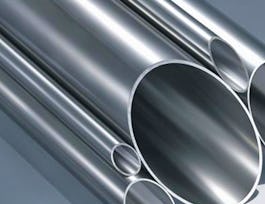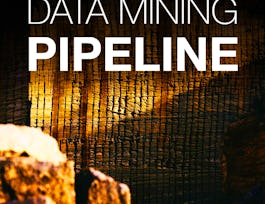This course entitled “ASME B31 Series and Pipeline Construction” under the specialization entitled “Design of Industrial Piping Systems” is aimed to cover power, process, and transportation ASME B31 code sections and activities involved in standard cross-country pipeline construction. First, the evolution of the ASME B31 Pressure Piping series is covered as it is important to know and all the code sections under ASME B31 Pressure Piping are mentioned in this course. The layouts of the code sections namely ASME B31.1, ASME B31.3, and ASME B31.4 are elaborated to address the design procedure of power, process, and liquid transportation piping systems to comply with the requirements mentioned in these code sections. The learners get familiarized with the chapters and their paragraphs, mandatory and non-mandatory appendices of these three code sections.

Offrez à votre carrière le cadeau de Coursera Plus avec $160 de réduction, facturé annuellement. Économisez aujourd’hui.


ASME B31 Series and Pipeline Construction
Ce cours fait partie de Spécialisation Design of Industrial Piping Systems

Instructeur : Subject Matter Expert
Inclus avec 
(11 avis)
Expérience recommandée
Compétences que vous acquerrez
- Catégorie : Knowledge of Fluid Mechanics, Strength of materials
- Catégorie : Graduate students of Mechanical / Chemical / Petro-Chemical/ Instrumentation
- Catégorie : Undergraduate students of Mechanical / Chemical / Petro-Chemical/ Instrumentation
Détails à connaître

Ajouter à votre profil LinkedIn
2 devoirs
Découvrez comment les employés des entreprises prestigieuses maîtrisent des compétences recherchées

Élaborez votre expertise du sujet
- Apprenez de nouveaux concepts auprès d'experts du secteur
- Acquérez une compréhension de base d'un sujet ou d'un outil
- Développez des compétences professionnelles avec des projets pratiques
- Obtenez un certificat professionnel partageable


Obtenez un certificat professionnel
Ajoutez cette qualification à votre profil LinkedIn ou à votre CV
Partagez-le sur les réseaux sociaux et dans votre évaluation de performance

Il y a 2 modules dans ce cours
This module deals with the ASME B31 Pressure piping series code sections such as ASME B31.1, ASME B31.3, and ASME B31.4. At the beginning, the evolution of the ASME B31 Pressure Piping series is briefed in this module and all the code sections included in ASME B31 Pressure Piping are mentioned. The layouts of the three important code sections are considered in this module to address the design procedure of power, process, and liquid transportation piping to meet the requirements mentioned in these code sections. These code sections are ASME B31.1, ASME B31.3, and ASME B31.4. ASME B31.1 – Power Piping Code section consists of seven chapters, ten mandatory appendices, and five non-mandatory appendices. The contents related to requirements presented in seven chapters of the ASME B31.1 code section are covered in such a way that the learner can become familiarised with all the paragraphs of the Power Piping Code section and ensure the piping design complies with the ASME B31.1 code section. ASME B31.3 – Process Piping Code section consists of ten chapters and twenty mandatory appendices. All appendices are mandatory and no non-mandatory appendix. The contents presented in ten chapters of the ASME B31.3 code section are covered lucidly. Process piping systems are subjected to different kinds of services such as toxic, non-toxic, flammable, non-flammable, elevated temperature, high pressure, high purity, and normal. Therefore, the contents of this code section based on requirements are systematically covered so that learners cannot face difficulty while designing the piping system and comply with the ASME B31.3 code section. ASME B31.4 code section covers pipeline transportation systems for liquids. This particular code section consists of nine chapters and two appendices. ASME B31.4 additionally covered corrosion control. It also covers the requirements for offshore pipelines. This particular code section is briefed in this module so that the learner can also become familiar with the important paragraphs and the concerned requirements for designing the pipeline to comply with this code section.
Inclus
17 vidéos1 lecture1 devoir
Cross-country pipelines are mostly underground and hence they are invisible. This is the reason why they don’t get their due recognition from the general public regarding the amount of contribution that is being made by the pipelines in terms of economic growth and security of any nation. These are the lifelines of the nations. Therefore, to start with, the advantages of cross-country pipelines over conventional transportation such as by road, rail, or shipping, are covered to bring awareness about the importance of these pipelines among the learners. Next, the activities involved in standard pipeline construction starting with ‘Right of Use’ or ‘Right of Way’ are covered. There is a sequence of activities involved in cross-country pipeline construction. Right of Way, Clearing, Grading, Stringing, Trenching, Lowering, Backfilling, Tie-in, Welding, Bending, Non-destructive testing, Field joint coating, Cathodic protection, Special installation on pipelines like Markers, and Cleanup are the activities discussed in detail in this specific module. The equipment and crew that are needed to perform these activities are specified so that learners can realize the type and gravity of each activity, and the quantum of work involved in each activity. Corrosion of pipelines is one of the threats posed by underground cross-country pipelines. Cathodic protection is an effective method of protecting buried pipes and ensuring pipeline integrity. The technique, design considerations, and major components of the cathodic protection system are covered. Open-cut method and its limitation while routing the pipelines across the obstacles and within urban areas are discussed. Types of Horizontal Earth Borings and how a tunnel is formed underneath the obstacle using the Horizontal Directional Drilling technique are covered. Key features, functions, and advantages of the thrust boring are explained. How the thrust boring is different from Micro-tunneling is also covered. Finally, several strategies to repair the leaks in the pipeline, what is hot tapping and its importance, and the hot tapping construction are meticulously covered in this specific module.
Inclus
14 vidéos1 devoir
Instructeur

Offert par
Recommandé si vous êtes intéressé(e) par Mechanical Engineering

L&T EduTech

L&T EduTech

Google Cloud

University of Colorado Boulder
Pour quelles raisons les étudiants sur Coursera nous choisissent-ils pour leur carrière ?




Avis des étudiants
Affichage de 3 sur 11
11 avis
- 5 stars
72,72 %
- 4 stars
9,09 %
- 3 stars
0 %
- 2 stars
0 %
- 1 star
18,18 %
Révisé le 23 oct. 2024

Ouvrez de nouvelles portes avec Coursera Plus
Accès illimité à plus de 7 000 cours de renommée internationale, à des projets pratiques et à des programmes de certificats reconnus sur le marché du travail, tous inclus dans votre abonnement
Faites progresser votre carrière avec un diplôme en ligne
Obtenez un diplôme auprès d’universités de renommée mondiale - 100 % en ligne
Rejoignez plus de 3 400 entreprises mondiales qui ont choisi Coursera pour les affaires
Améliorez les compétences de vos employés pour exceller dans l’économie numérique
Foire Aux Questions
Access to lectures and assignments depends on your type of enrollment. If you take a course in audit mode, you will be able to see most course materials for free. To access graded assignments and to earn a Certificate, you will need to purchase the Certificate experience, during or after your audit. If you don't see the audit option:
The course may not offer an audit option. You can try a Free Trial instead, or apply for Financial Aid.
The course may offer 'Full Course, No Certificate' instead. This option lets you see all course materials, submit required assessments, and get a final grade. This also means that you will not be able to purchase a Certificate experience.
When you enroll in the course, you get access to all of the courses in the Specialization, and you earn a certificate when you complete the work. Your electronic Certificate will be added to your Accomplishments page - from there, you can print your Certificate or add it to your LinkedIn profile. If you only want to read and view the course content, you can audit the course for free.
If you subscribed, you get a 7-day free trial during which you can cancel at no penalty. After that, we don’t give refunds, but you can cancel your subscription at any time. See our full refund policy.

